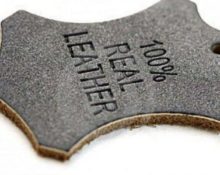Feet should be kept warm and dry. EVA boots meet these requirements: warm, moisture-resistant. The point is the material from which they are made. Externally bulky and clumsy. Originally intended for extreme weather conditions. And as equipment for snowboarding. Favorite shoes of fishermen and hunters.
Easy to care for, durable, lightweight frost-resistant and moisture-repellent material. The demand for versatile EVA boots is growing rapidly. Not only among winter fishing enthusiasts, but also among city residents leading an active lifestyle.
What is EVA?
Ethylene vinyl acetate or EVA is a lightweight, elastic synthetic material made from a type of polymer. It is based on foamed low-molecular substances and organic gas. They create high-quality insulating properties. Thermoplastic: the interaction of molecules increases at low temperatures, the product does not lose elasticity. Melt at high. Not afraid of wet environments.

It is used to make toys, mouth guards for bite correction, travel mats, isomat materials, and cable sheathing. Equipment for extreme sports, fishing and hunting began to be produced more than a decade ago. At first, these were only flip-flops, with an open or closed toe - for the beach, working in the garden. Today, a wide variety of shoes are made from ethylene vinyl acetate, both for men, women, and children.
Distinctive properties of EVA shoes
EVA has an environmentally friendly composition. The production does not use glue, artificial rubber, as for rubber boots, or tannins for leather products. Therefore, these shoes are suitable for children and people with sensitive skin - they do not cause allergies.

The ease of use and hygienic properties of EVA shoes is that they do not absorb moisture.
Important: Fungi and bacteria actively multiply in damp shoes. EVA products do not get wet. Simply wipe with a clean wet cloth. Dries quickly, no unpleasant odor.
Tightness. These boots have no seams - they are a complete product made of a dense porous structure that is resistant to extreme environmental influences. They are not afraid of water, snow, dirt or chemical fertilizers. For the same reason, they retain heat well without letting in the cold. Fishermen were the first to appreciate the value of boots. The first models were produced for them. Feet do not freeze or get wet from prolonged exposure to ice water.

Improper care can irreparably damage the product: EVA is afraid of high temperatures. Near an open flame or a hot battery it may begin to melt. The shape of boots can be irreversibly deformed by large external pressure. The material is sensitive to mechanical damage.
Pros and cons of EVA boots
Flexible EVA material is resistant to long-term use. Of course, over time, small cracks appear at the bend points, but the product does not lose its insulating properties due to the thick walls and streamlined sole. The downside is that hard shoes are not suitable for daily long-term wear. Boots made from EVA cannot be softened by wearing them in like shoes made from other materials. There is a high probability of rubbing calluses.

Important. The size of the foot changes during the day up to 1 cm. It increases depending on physical activity. If you wear hard shoes all day, by the evening they will rub your feet.
You can choose comfortable EVA boots that will last for more than one season only after trying them on. As a rule, manufacturers present a small-size range. A pair needs to be selected a size, or even two larger, if you are considering an option for the winter season. Average low temperature, for comfortable wearing of EVA boots, up to -15°C. A warmer option, depending on the model, with internal removable insulation. It is easy to care for. If necessary, remove to prevent your foot from sweating. In the warm season, such boots can become a replacement for rubber boots. Provided that the size is chosen correctly.
Relatively lightweight, EVA boots do not weigh down the foot during long walks. And the simple shape of the embossed shoe last ensures uniform weight distribution and the necessary shock absorption. An important parameter when choosing shoes for children and the elderly.


 0
0





